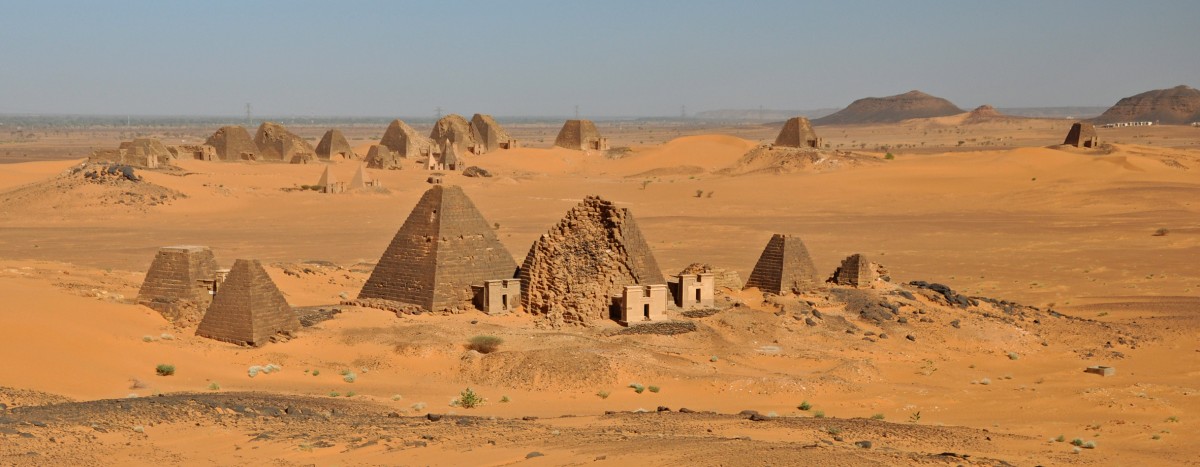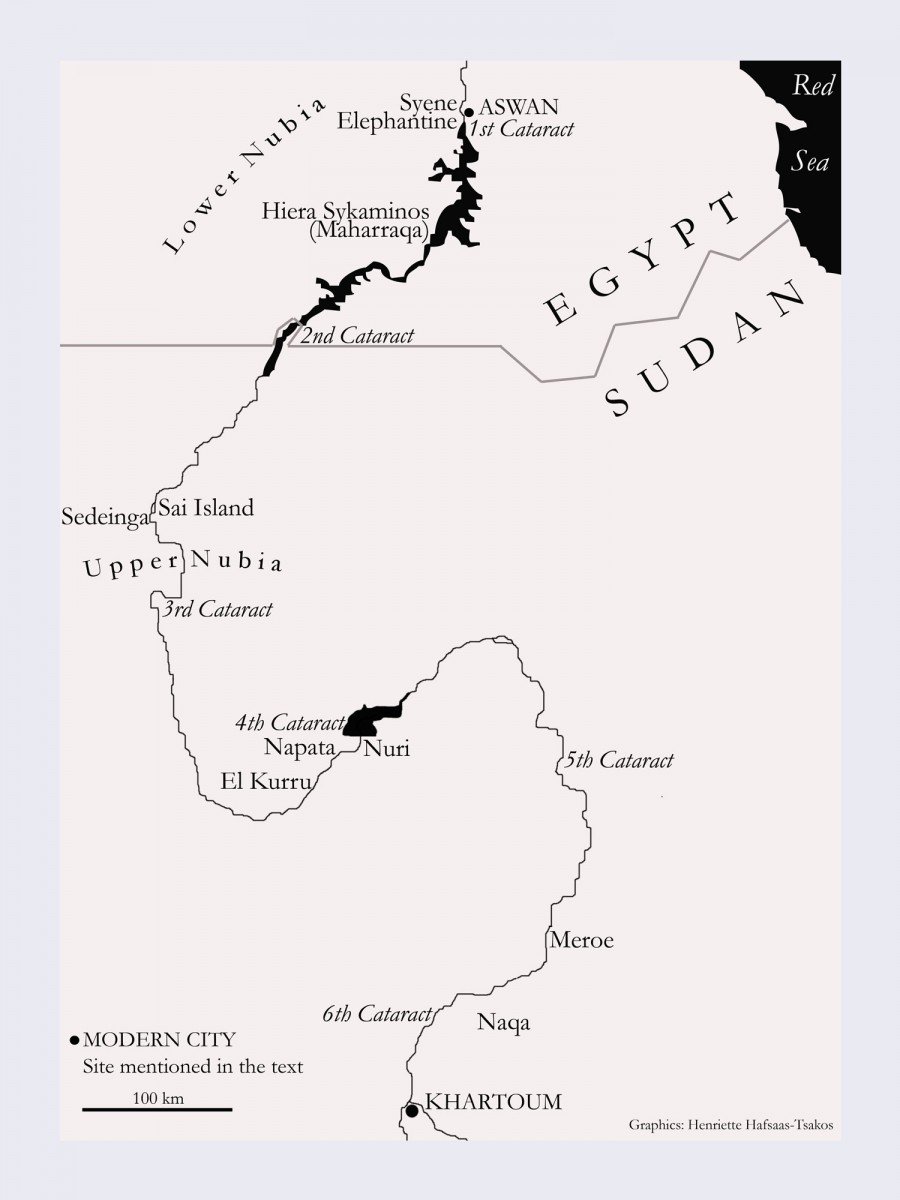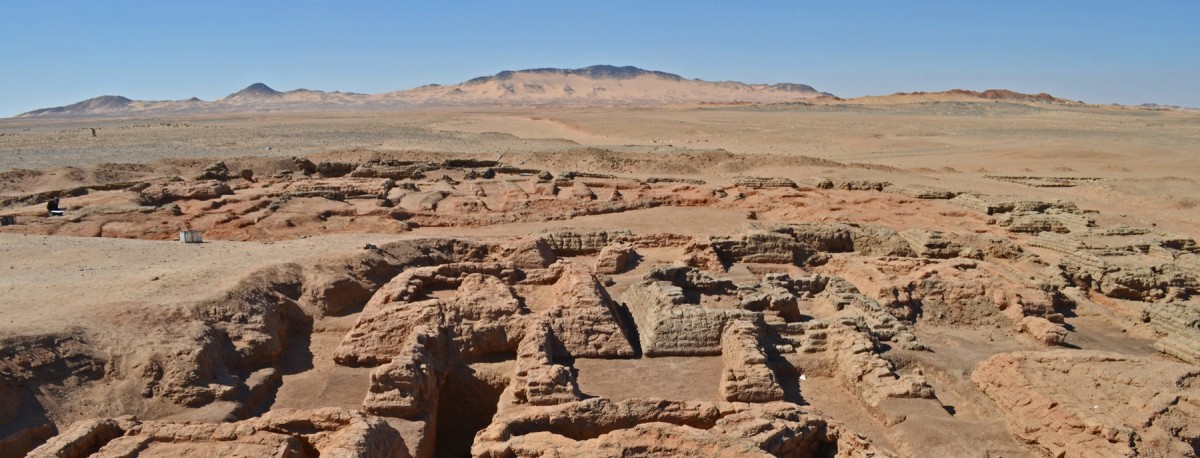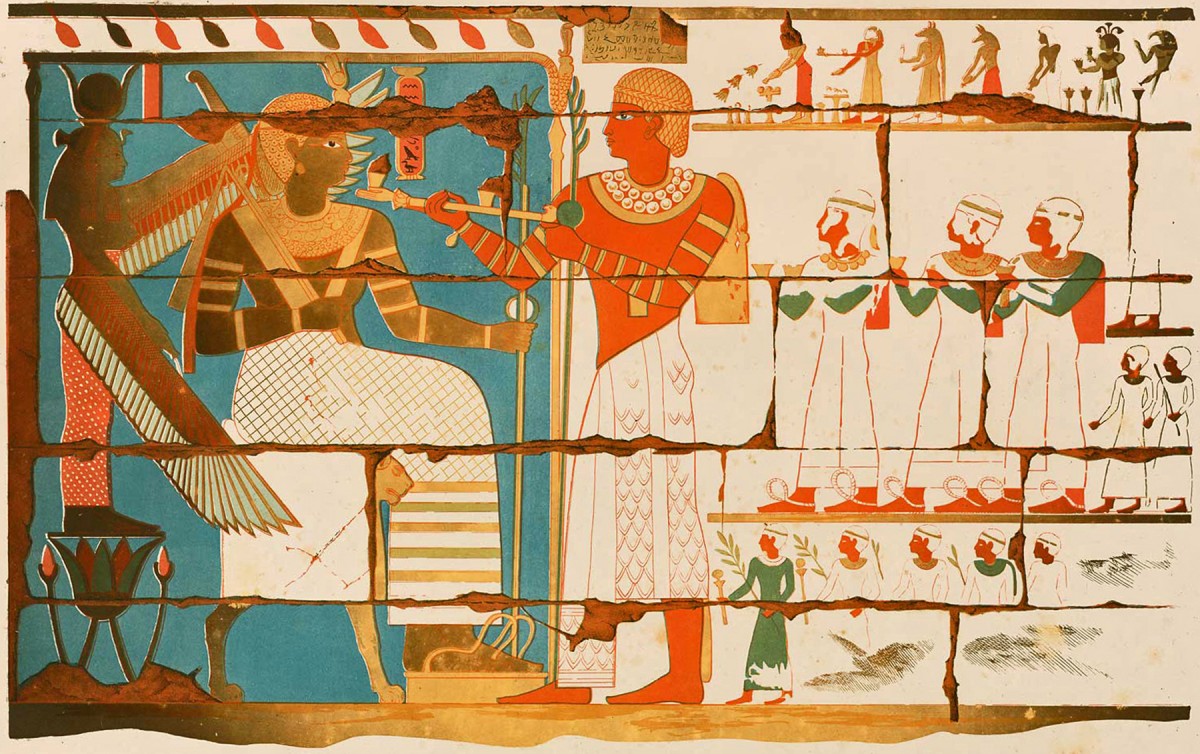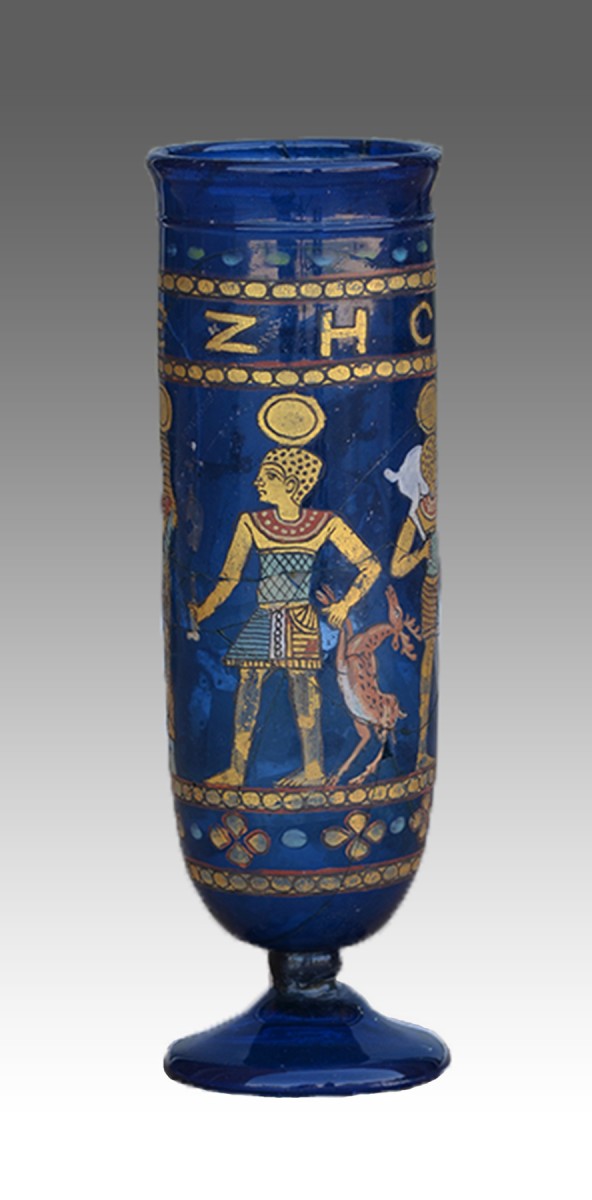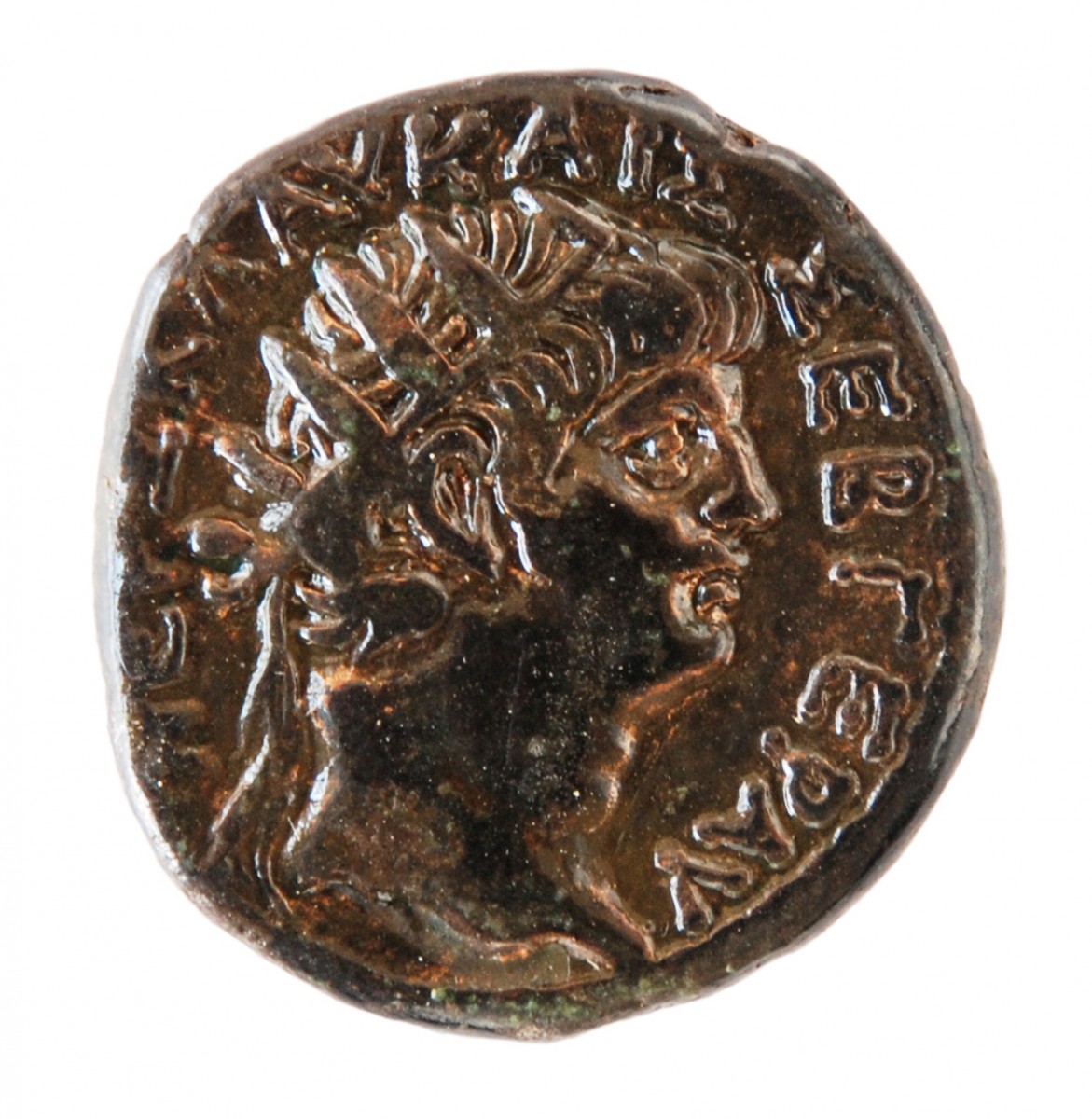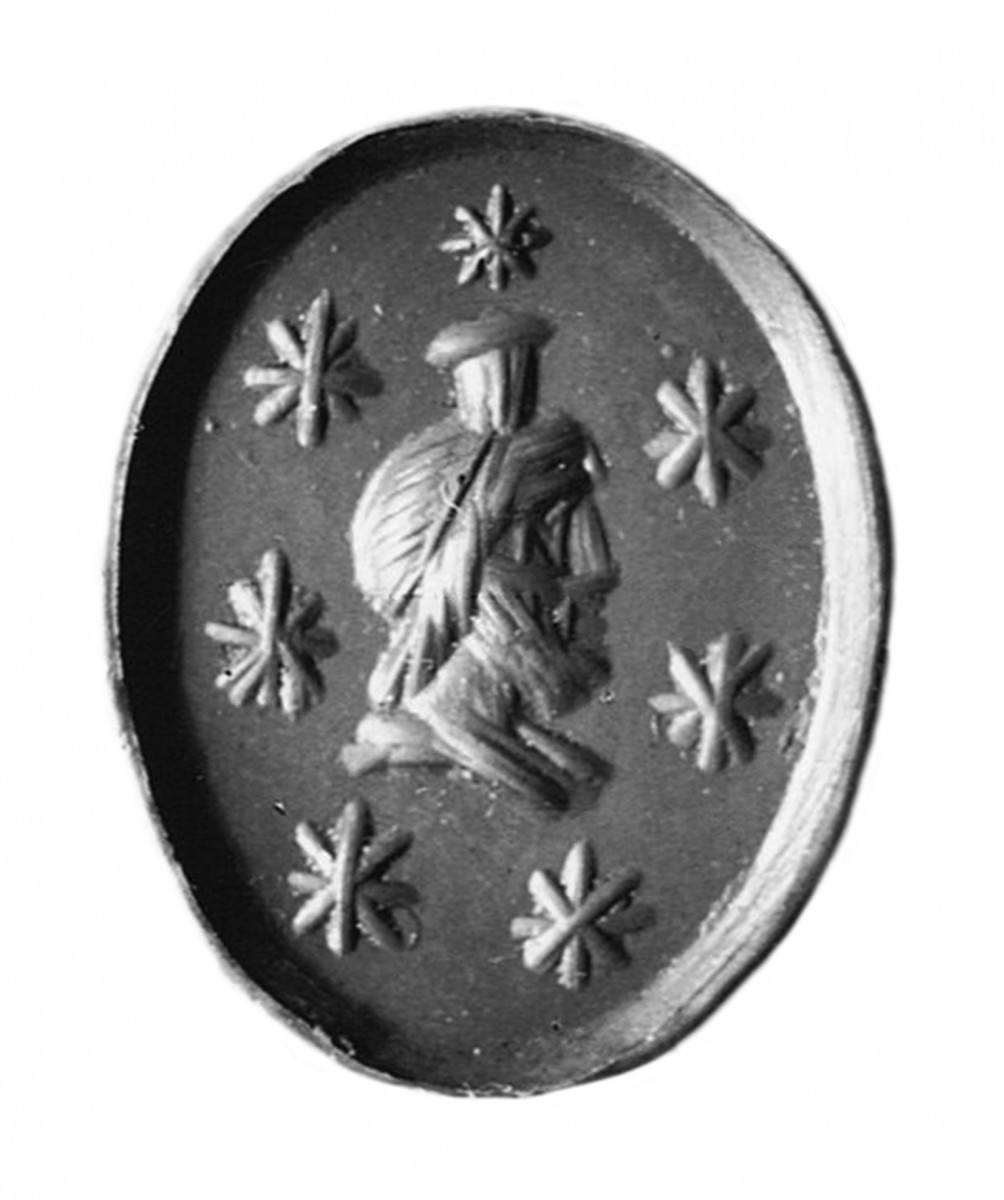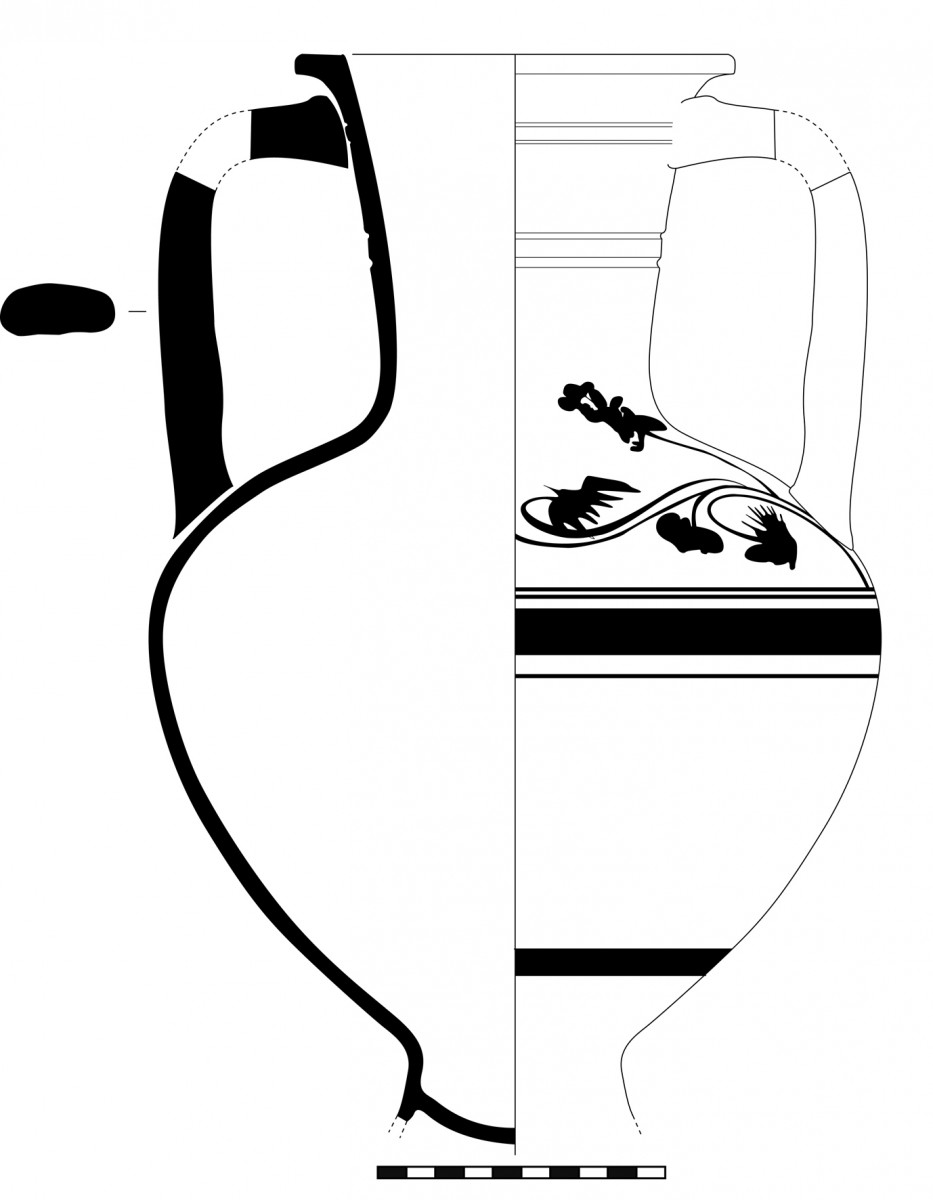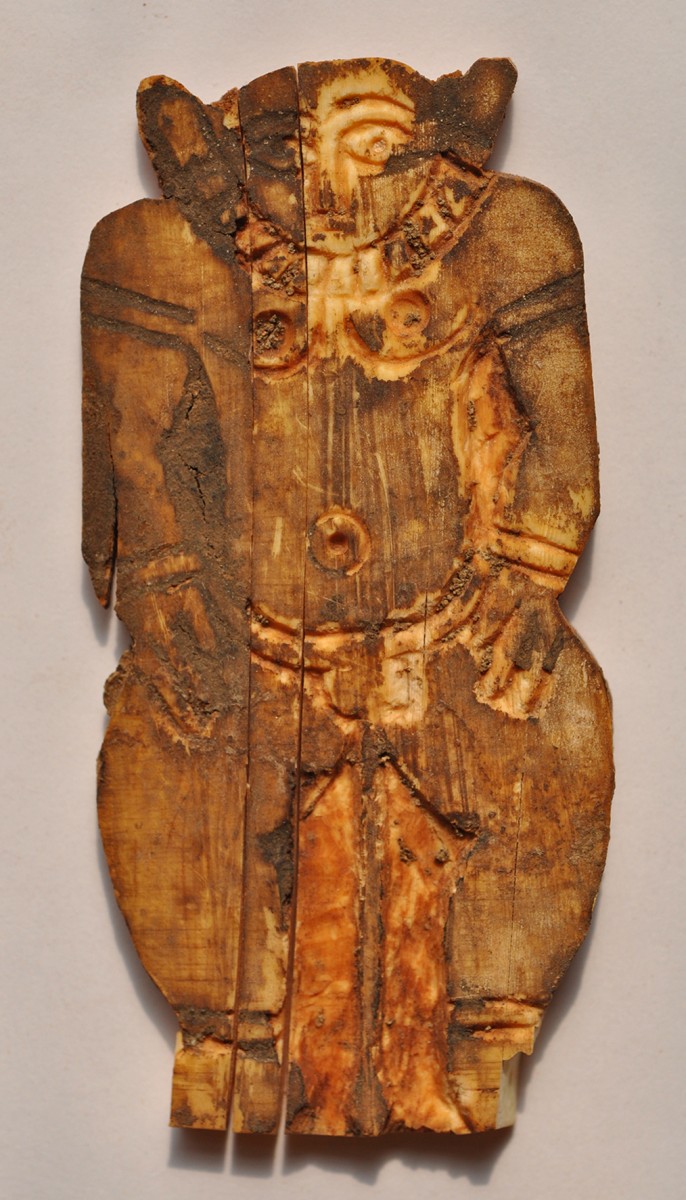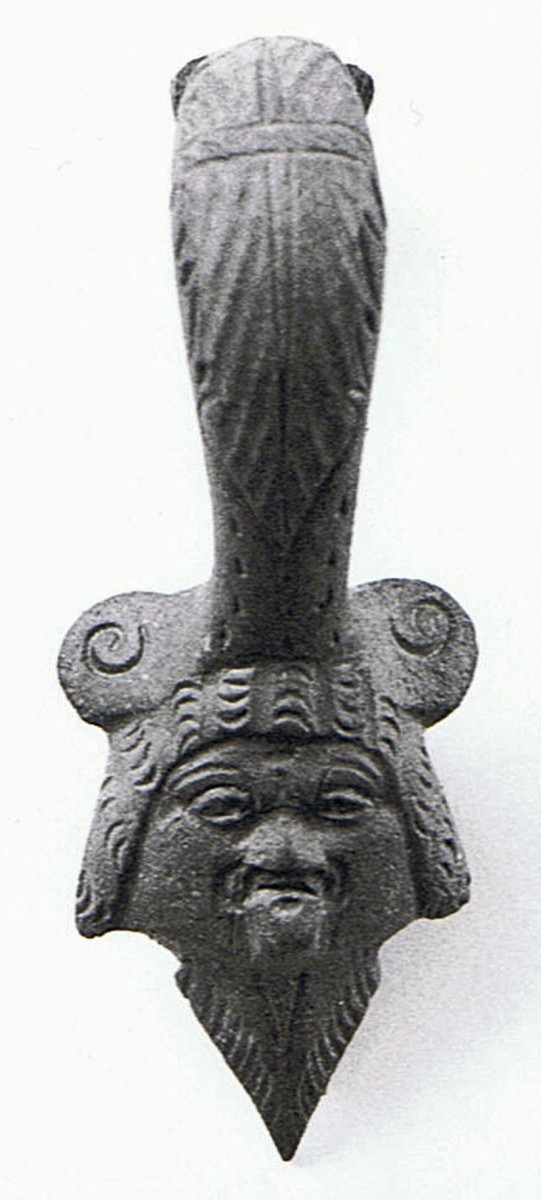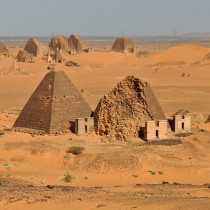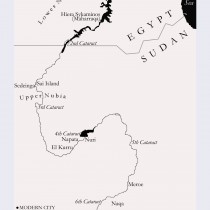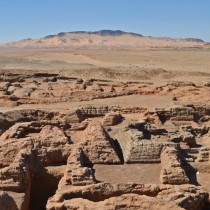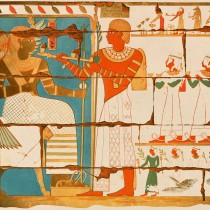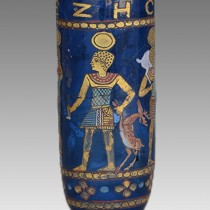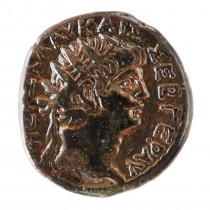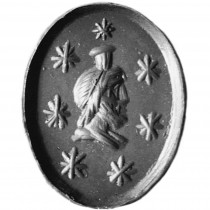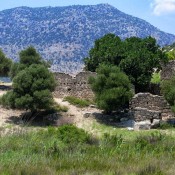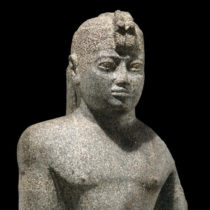Intro
Examining the relations between a civilization that flourished in the Eastern Mediterranean and another that developed in Northeastern Africa, one should not be surprised by discovering common traits. The reason is that on the one hand the former has been the unified territory of several empires, like the Egyptian, Hellenistic, Roman, Byzantine, and Islamic, whose influence naturally covered even wider horizons than their political boundaries; and on the other hand the latter is united with the former by means of the longest river in the world, the Nile, that like a corridor links the heartlands of the African continent with its Mediterranean coastline. A similar function may be claimed for the Red Sea, but in the present collection of studies the focus will be on the relations between the Greco-Roman world’s natural habitat in the Mediterranean and the Nubian cultures of Late Antiquity and the Middle Ages whose homestead is the Middle Nile region.
The past of the Middle Nile is traditionally divided into the following periods:
Prehistory (c. 300 000-4000 BCE): The Stone Ages (Paleolithic, Mesolithic and Neolithic) that run concurrently with the divisions of these periods in African archaeology more generally.
Protohistory (c. 4000-1700 BCE): A-Group, C-Group and Kerma cultures that are contemporaneous with the Pre-Dynastic, Old Kingdom, and Middle Kingdom periods of the Egyptian (Pharaonic) past. Culturally they can be identified with the so-called Bronze Age.
Historical periods
The kingdom of Kush that emerged at Kerma in c. 1700 BCE was probably the first state formation in Sub-Saharan Africa. However, it was short-lived and collapsed after c. 200 years because of Egyptian attacks on their new rival on the Nile. The Middle Nile was thereafter incorporated into the Egyptian empire of the New Kingdom (c. 1500-1200 BCE). The state at Kerma is considered as the oldest phase of the so-called state of Kush, a term encompassing two more ancient state formations in the Middle Nile region.
The second phase of Kush (c. 900-400 BCE) was established at Napata near Jebel Barkal (“Holy Mountain” in Arabic), which the Egyptian rulers of the New Kingdom had recognized as the place of “birth” of their god Amun and from where derived the ideology of the Sudanese pharaohs who ruled not only the Middle Nile, but also Egypt under the 25th Dynasty, called “Ethiopic” in both ancient sources and scholarly works of today. The Black Pharaohs, as they are also called, appear prominently in the Histories of Herodotus.
The last phase of the state of Kush was centred on Meroe (c. 400 BCE–400 CE). The Meroitic culture was an amalgamation of Egyptian, Greco-Roman and indigenous elements.
After the fall of the Meroitic kingdom, the two centuries that follow (c. 400-600 CE) constitute the Post-Meroitic period, which is characterized primarily as a transitional phase between the ancient states and the Medieval Christian kingdoms. This period is, however, a cultural phenomenon with independent traits that are very valuable for the understanding of the Sudanese past.
From c. 500 CE, Christianity is introduced into Sudan, and by c. 600 CE, at least three Christian kingdoms had been formed that became the political framework for the development of the medieval Nubian civilization. This culture combined Coptic, Byzantine, and African traits for the expression of its unique Christian identity.
The Christian kingdoms of the Middle Nile collapsed after c. 1200 CE, and only small enclaves of Christian communities continued until c. 1500 CE, although the end of Christianity in Sudan is a highly disputed issue. In any case, from c. 1500 CE, two new political forces appear on the scene: the Ottoman Empire in the North (until the Third Cataract) and the Funj Sultanate in the South (from Sennar, south of Khartoum until roughly the Third Cataract). These are the first Islamic state formations in what will later become Sudan.
Modern Sudan is the result of late 19th century nationalist-religious movements, the most crucial of which is without doubt the Mahdist revolt in the 1880s. However, already in 1821, the Egyptian state under Mohamed Ali conquered the Middle Nile and the surrounding deserts (to a certain degree), and the Ottomans founded Khartoum and thus initiated what we now call Sudan.
In the present collection of studies, the focus will be on the Meroitic and the Medieval periods, which provide the best evidence for the contacts between the Greco-Roman world and the Middle Nile region. The collection consists of five papers:
In part 1, Vincent Francigny (director of SFDAS) presents the burial traditions at Meroe;
In part 2, Mohamed Farouq Abdelrahman (PhD candidate at University of California, Santa Barbara) analyses aspects of political economy in the Meroitic state;
In part 3, Artur Obluski (Director of the Polish Centre in Cairo) examines the political connections between Nubia and the Greco-Roman and Byzantine worlds;
In part 4, Dobrochna Zielińska (lecturer at the University of Warsaw) examines Nubian Christian iconography in relation with Byzantine mural art;
In part 5, Alexandros Tsakos (post-doctoral researcher at the University of Bergen) discusses the use of the Greek language in Christian Nubia.
The present collection wishes thus to become a point of reference for both Greek researchers and those from other lands that will turn their attention to the innovative but well established ideas presented by these five scholars who have all marked their fields of study to various degrees and in different ways by their work and publications.
Alexandros Tsakos
Postdoctoral Researcher, University of Bergen
Henriette Hafsaas-Tsakos
Dr in Archaeology, University of Bergen
Meroe: burial traditions at the edge of Hellenism
Before the kingdom was re-discovered at the beginning of the 19th century by the first European travellers that entered Nubia following the army of Mehemet Ali, Meroe only appeared in the historical tradition via descriptions and myths that survived through copies of ancient Greek, Latin and Arabic literature. Among them, a few texts address the question of the religion and the burial traditions followed by the Kushites in the middle Nile valley. As early as the 5th century BC, Herodotus, who investigated the origins of the Greco-Persian wars, delivered an important set of information regarding the populations and the geography of the lands surrounding the Mediterranean world, including Meroe. Though he personally never went farther than the island of Elephantine (now in the middle of the modern town of Aswan) at the bottom of Egypt, he is said to have interviewed two emissaries, so-called “spies”, sent to the Meroitic kingdom by the king Cambyses. Therefore, we find in his Histories the first account on Meroitic funerary practices, where Meroites bury their dead in a sort of glass coffin that allows seeing the body, kept at home for the first year following the death. Though the report is unlikely true, it remained in the literature for a few hundred years, as it reappears in the description made around the 2nd century BC by Agatharchides of Cnidus, when cited by Diodorus in his Bibliotheca Historica. Around the beginning of our era, though contacts between Meroe and the external world are numerous, the myth of the glass coffin can still be found in Strabo’s Geography. This shows how a large kingdom dominating the middle Nile valley and a substantial part of the trade with the rest of the African continent was also, somehow, part of the unknown margins of the Mediterranean world. Paradoxically, Hellenism impacted societies such as Meroe far beyond these borders, which can be seen notably through the lens of funerary practices.
Two traditions for one kingdom
Though Meroe is well known for its pyramidal funerary monuments, particularly those made of stones in the royal necropolises (fig. 1), one should not forget that the pyramidal tradition imported from Egypt and adopted by the first Napatan rulers around the 8th century BC, corresponds to a minor percentage of the Kushite burials, as it was a prerogative of the royal administration. A tradition that should be considered as an exception in the Nubian history, geographically limited to some sites of the Nile valley. The vast majority of the Meroitic graves had indeed no superstructure at all, or was covered by a tumulus, the traditional sub-Saharan way of marking a tomb and avoid predators to eat the corpse.
Mapping the distribution of pyramidal monuments in Nubia, made with stones or with mud bricks, sheds light on a cultural division between the elite and the common population. Around the capital Meroe, almost no pyramidal superstructures can be found, and when they are, they only mark a few graves of a cemetery. Downstream of the Fourth Cataract, the rules change radically, as most of the cemeteries contain at least a few pyramids, a number that can reach several hundreds in regional capitals such as Sedeinga (fig. 2).
In the southern half of the kingdom, only a few people seem to have wanted, or to have been allowed to follow the model used by the royal family, while in the northern half, most of the elite groups had adopted the pyramid as the funerary superstructure. This could be explained by the fact that Meroitic population living there was more exposed to the influence of Greco-Roman Egypt, if not directly involved in trade activities with their prominent neighbour. As Egyptians did not use the pyramid anymore during Late Antiquity, it also means that Meroites from the north were conservatively perpetuating an old tradition that entered Nubia centuries ago, during the New Kingdom conquest. If almost nobody in the south, apart from the royal circles, opted for the pyramid, it is mainly because their land was never conquered and their elite groups never accustomed to this practice. Only because of the sack of Napata in 590 BC by the army of Psamtik II, was the pyramidal tradition imported to the south of the Kushite territory by a population fleeing the area of the former capital and moving to Meroe.
The cultural division of the kingdom can also be noticed in the way corpses were deposited in the grave. In the north, most of the bodies were put in supine position with the head to the west, while in the south, apart from some elite or royal burials, the body was often put in a crouched position with the head to the south. The possible admixture of the Meroitic population could offer an explanation to what seems to be a cultural antagonism, but so far no DNA analysis on a large scale ever took place, mostly because of the high degradation of samples in that part of the world.
After the Egyptian withdrawal from Nubia, the reasons why the first local rulers decided to shift from the ancestral tumulus to the pyramid are clearly linked to the conquest of Egypt by the Nubians, who often referred to the Old Kingdom’s pharaohs, the first to have invented the pyramid, as role models. However, their monuments were not inspired by those found in Egypt, but those already present in the Nubian landscape, that once marked the graves of local egyptianized princes or foreign administrator in the former colony. Much smaller than Egyptian royal monuments, the Kushite pyramids prospered until the late 4th century AD, at a time where the prerogative was extended to a greater part of the population. Over a millennium, the architecture of the royal edifices didn’t change much, except for the method of construction that lost quality. The original temple that was built on the east side of the Egyptian monument was replaced by a small chapel, heavily decorated with funerary scenes in painted sunk relief (fig. 3). These scenes reveal the degree of entanglement between local traditions and pharaonic cultural influences. Beyond the general aesthetic appearance that refers to Egyptian standards, or the depiction of Egyptian gods and goddesses, details such as the palm leaves carried by officials attending the funerals, or the sorghum ears in the left hand of the king, the queen or the prince, demonstrate original Nubian background.
For centuries, in the same kingdom, elaborate pyramidal monuments would neighbour simple grave mounds, both equally covering the burials of rich and powerful people simply following two different funerary traditions. Only the study of the objects accompanying the dead allow us to go farther and see how each individual was connected, or not, to the official administration, if not involved in trade with foreign countries.
Funerary material: evidence from the external world
Around the 1st century AD, in the northern half of the kingdom, it became common to have an inscription on the funerary stele or offering table. In cemeteries of the main administrative centres, this valuable source of information about the elite was found accompanying up to 10% of the graves. Though we are not always able to translate all the titles an official could bear, a few of them undoubtedly referred to the control of merchandises around the border area with Egypt, or to assignment as emissary to “Rome”, which we should understand as “the Roman Empire”, most probably Syene (Aswan) or Alexandria.
The kingdom of Meroe, which possesses the world southernmost evidence for Greek architecture with the Corinthian capitals of the Hathor temple in Naga, also imported from the Mediterranean world many kinds of goods and productions, mainly for consumption. Recycled in funerary deposits, these objects reflected the wealth of the dead and its family, and were sometimes part of the ritual artefacts used during the burial ceremony. It isn’t clear if foreign artisans visited or permanently settled in the Meroitic kingdom, but the discovery in the non-royal cemetery at Meroe of an offering table with its inscription entirely written in Greek, suggests that it could have been possible.
Among imports made of glass, which were for the most part aryballoi and unguentaria brought for their content (i.e. perfumed oils), one of the most famous discoveries is a pair of blue flute glasses found at the entrance of a grave in the West Cemetery at Sedeinga (fig. 4). Voluntarily broken in a ritual taking place at the closing of the burial chamber, they both bear the Greek inscription “Drink, [so] you may live”. Probably produced in the 2nd half of the 3rd century AD (in Alexandria?), imported to the Meroitic kingdom, they were interestingly used in a context that would have suited Roman practices.
Before such products could travel to Meroe, during the “golden age” of the first centuries of our era, characterized by peaceful contacts and trade between Meroe and the Roman Empire, relations were tense between both, with several armed conflicts. In the 3rd century BC, during the reign of Ptolemy II, the border was established at the Second Cataract, with the Meroites having tried many times to take over the territory of Lower Nubia since the advent of Alexander the Great. When Egypt entered the Roman Empire, a military expedition of Meroe in 25 BC went up to Elephantine, causing a war with the Roman army that only ended in 21 BC, establishing a new border at Hiera Sykaminos (Maharraqa).
Along with imported products, in the Meroitic kingdom some discoveries point at “diplomatic” gifts or prestige artefacts buried with the dead. One of the most striking examples is a Greek red-figure rhyton made during the late 5th century BC by the famous potter Sotades, and now in the collection of the Museum of Fine Arts in Boston. Though it was found in a much later context, at the base of a pyramid in the Royal North Cemetery at Meroe, it must have been a unique and priceless object at the court of the king. In province, small finds such as coins with the head of the emperor (fig. 5), de facto useless in a non-monetary economy, were probably similar kind of gifts, but at a much smaller scale.
Through imported artefacts, religious symbols, figures and ideas also cross borders, influencing models in art as well as cultural practices. But Meroe seems to have welcomed foreign concepts that only fitted its own traditions. This selective approach regarding the repertoire of gods and goddesses offered by Egypt and Hellenism favoured, for example, the development of the criocephalus hypostasis of Amun, as the ram was probably a holy figure in Nubia since the Bronze Age. In the same way, the Meroitic kingdom seems to have completely discarded the figure of Sarapis that has been created in Egypt to alleviate the tensions between Greek and Egyptian community, but had no purpose for Nubian population. Therefore, representations of this deity were extremely rare in the Meroitic kingdom (fig. 6), and only found in particular contexts of direct contacts with the Roman world.
In the shade of Dionysus
Living at the edge of Hellenism, Meroites were also able to fabricate and circulate certain products in their own kingdom. In the case of wine, containers from the Greco-Roman world were a constant source of inspiration for Meroitic workshops, creating all kinds of ceramic copies. According to the period, this production was meant to supplement a high demand or indicate a temporary collapse of the exchanges with the North. Shapes and decorations from the Greek tradition were digested and reinterpreted in a great variety of ceramics ranging from small lekythoi to large kraters (fig. 7). At first, designs and painted motifs changed over centuries to match the evolution of northern productions, but at the beginning of our era, artists expressed more freedom by including indigenous figures and symbols in their productions.
Cultural transmission regarding funerary practices and religion naturally brought Dionysus to Nubia. The reasons why Meroites welcomed such a peculiar god are to be found in the presence of the Egyptian Bes figure in their pantheon. Bes, in the early Kushite period that succeeded the Egyptian withdrawal from Nubia, was indeed a very popular god. Hundreds of amulets were found in the graves of el-Kurru and Nuri, showing his prominent role in protecting the body, especially for women and children. Syncretism and assimilation were common processes for the Kushites, though the arrival or the creation of a new entity never meant the replacement of an older one. The satirical gestures of Bes (fig. 8) and its connections with the mysteries of the mortuary world were a real invitation for the Thiasos, the ecstatic retinue of Dionysus.
The association of Dionysus and Osiris also seemed normal to the Meroites. Osiris, described as the “Master of wine”, was popular in the kingdom, though no sanctuary dedicated to him was ever found. The transformation of the grape to an alcoholic beverage able to alter the mind and the soul was for long associated to the process of death itself. The presence of grape decorations on potteries placed within the grave also remind us that wine consumption was a must to celebrate the transformation and the journey to the afterlife. But as wine was probably the privileged drink of the elite, local beer or Marisa was undoubtedly replacing the precious beverage for most of the population. Diodorus Siculus, relating the myth of Osiris in his Bibliotheca Historica, explains how the divinity gave to the civilized world the art of making wine, and to the land where vineyard couldn’t grow, the art of making a beverage with barley. This multicultural assemblage of celebrations and rituals connected to the Meroitic funerals led to a unique set of mortuary practices, much influenced by Hellenism. Some authors would use the words “funerary banquets” to describe these ceremonies, though the only known iconography comes from the representations of the royal chapels.
Toward the end of the Meroitic period, more figures associated with the cult of Dionysus entered the kingdom. In the so-called royal bath at Meroe, statues of satyrs and Silenus were found, together with representations of the local god Apedemak. The relation between the cycle of life and the holy cycle of the Nile flood was celebrated there, and placed under the auspices of both gods and sovereigns. The same extended relation was developed in the funerary practices where Isis and Osiris could be supported by an army of new deities coming from the north. By recycling into the grave objects covered with images of dancing satyrs, Silenus (fig. 9), vine leafs and grapes, Meroites expressed their faith in religious concepts born far away from their land. No one probably ever imagined that they would also be the last to do so, and maintain pagan rituals in Nubia long after Christianity spread into Egypt.
Vincent Francigny
Directeur de la Section Française d’Archéologie Soudanaise (S.F.D.A.S.)
